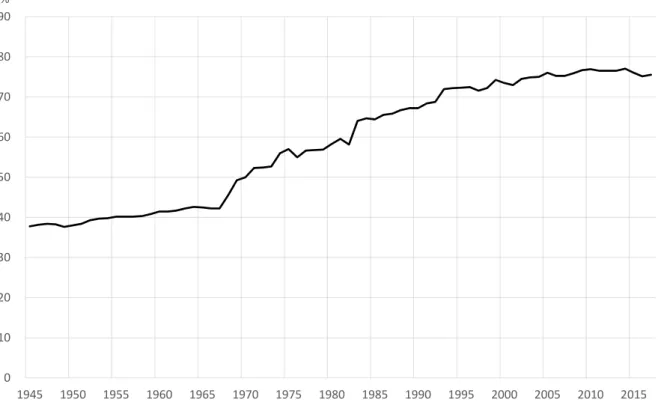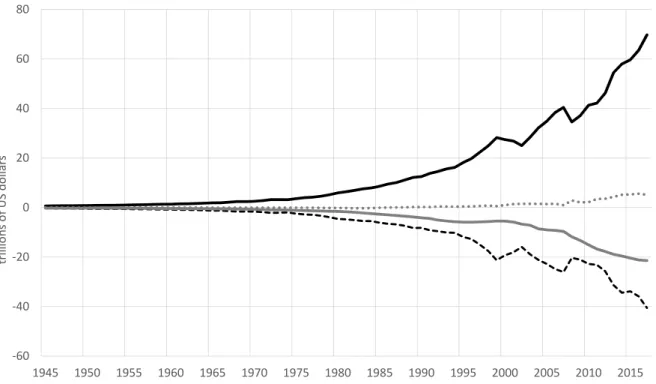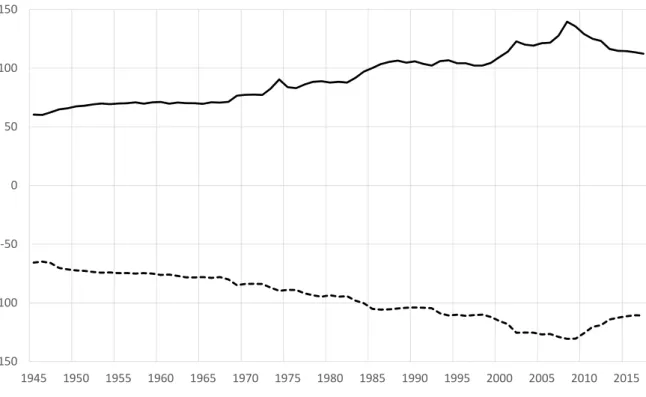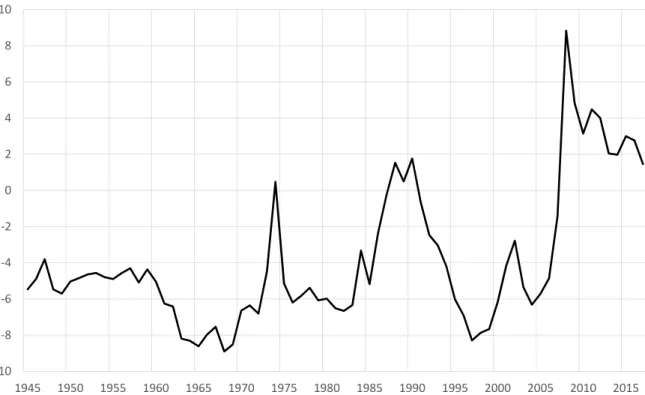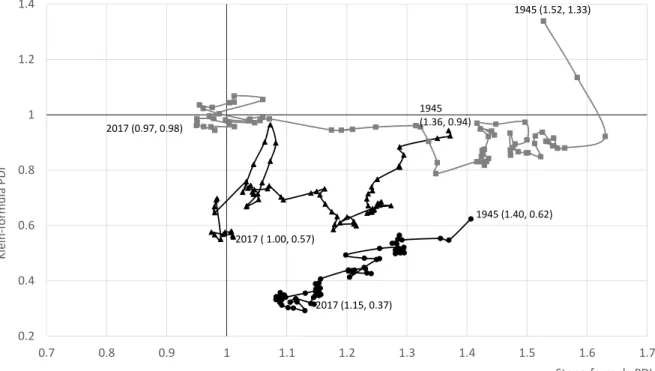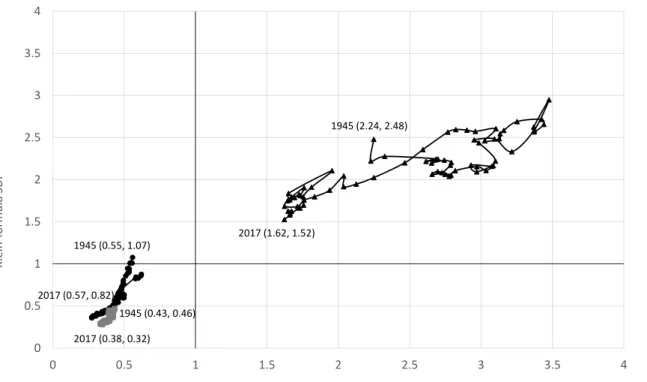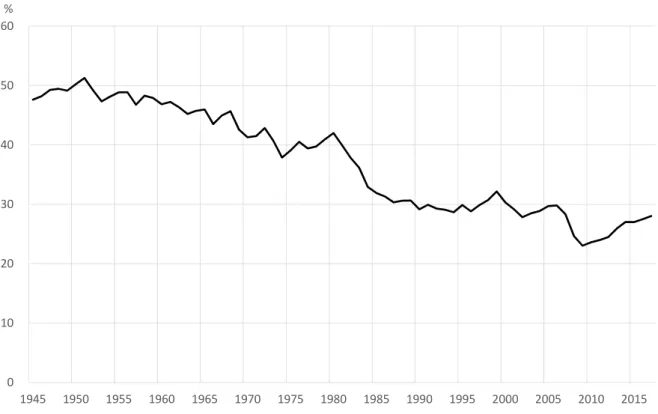A structural analysis of the U.S. financial economy
著者 Tsujimura Masako, Tsujimura Kazusuke
権利 Copyrights 日本貿易振興機構(ジェトロ)アジア
経済研究所 / Institute of Developing
Economies, Japan External Trade Organization (IDE‑JETRO) http://www.ide.go.jp
journal or
publication title
IDE Discussion Paper
volume 749
year 2019‑03
URL http://hdl.handle.net/2344/00050808
INSTITUTE OF DEVELOPING ECONOMIES
IDE Discussion Papers are preliminary materials circulated to stimulate discussions and critical comments
Keywords: flow-of-funds accounts; asset-liability matrices; financial net worth;
triangulation; dispersion indices JEL classification: C67, E44, O11
a
Rissho University, Tokyo, Japan; e-mail: tsujimura@ris.ac.jp
b
Keio University, Tokyo, Japan
IDE DISCUSSION PAPER No. 749
A Structural Analysis of the U.S.
Financial Economy
Masako Tsujimura a and Kazusuke Tsujimura b
March 2019
Abstract
The Flow-of-Funds Accounts of the Unites States have been published on a quarterly basis since 1945 up to the present time. In this paper, we will construct
‘sector × sector’ Stone and Klein-formula asset-liability matrices fully exploiting the huge accumulation of data. It allows us to trace the changes in the roles of the institutional sectors over the
years by application of useful input-output analytical tools, such as triangulation
and dispersion indices. Although there is not too much change in the characteristics
of non- financial sectors, the roles of financial institutions have been changing as the
financial market develops and the deregulation advances.
The Institute of Developing Economies (IDE) is a semigovernmental, nonpartisan, nonprofit research institute, founded in 1958. The Institute merged with the Japan External Trade Organization (JETRO) on July 1, 1998.
The Institute conducts basic and comprehensive studies on economic and related affairs in all developing countries and regions, including Asia, the Middle East, Africa, Latin America, Oceania, and Eastern Europe.
The views expressed in this publication are those of the author(s). Publication does not imply endorsement by the Institute of Developing Economies of any of the views expressed within.
I NSTITUTE OF D EVELOPING E CONOMIES (IDE), JETRO 3-2-2, W AKABA , M IHAMA - KU , C HIBA - SHI
C HIBA 261-8545, JAPAN
©2019 by Institute of Developing Economies, JETRO
No part of this publication may be reproduced without the prior permission of the
IDE-JETRO.
A Structural Analysis of the U.S. Financial Economy
Masako Tsujimura * Kazusuke Tsujimura † February 2019
Abstract
The Flow-of-Funds Accounts of the Unites States have been published on a quarterly basis since 1945 up to the present time. In this paper, we will construct ‘sector sector’
Stone and Klein-formula asset-liability matrices fully exploiting the huge accumulation of data. It allows us to trace the changes in the roles of the institutional sectors over the years by application of useful input-output analytical tools, such as triangulation and dispersion indices. Although there is not too much change in the characteristics of non- financial sectors, the roles of financial institutions have been changing as the financial market develops and the deregulation advances.
JEL Codes: C67, E44, O11
Keywords: flow-of-funds accounts; asset-liability matrices;
financial net worth; triangulation; dispersion indices
*
